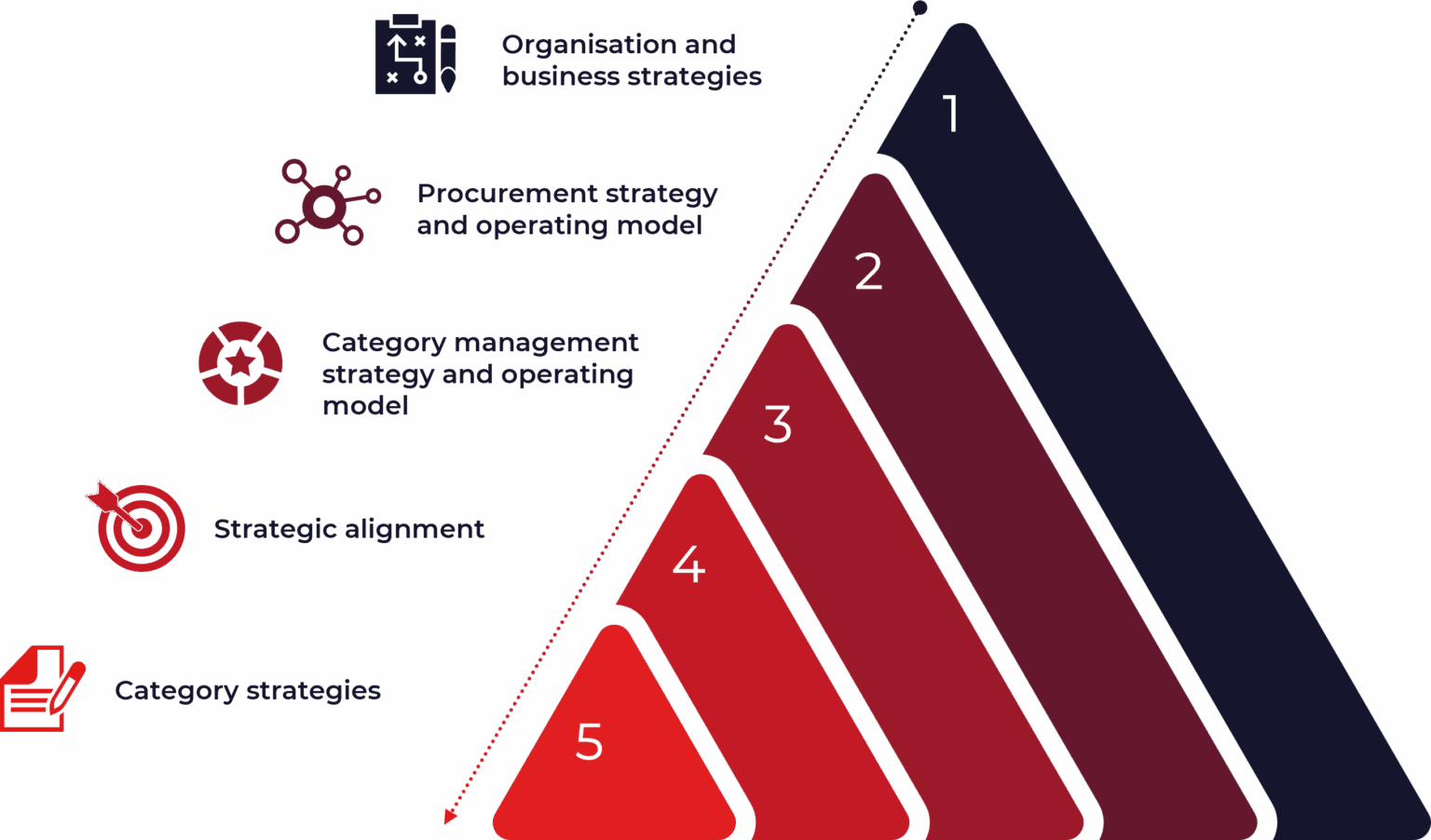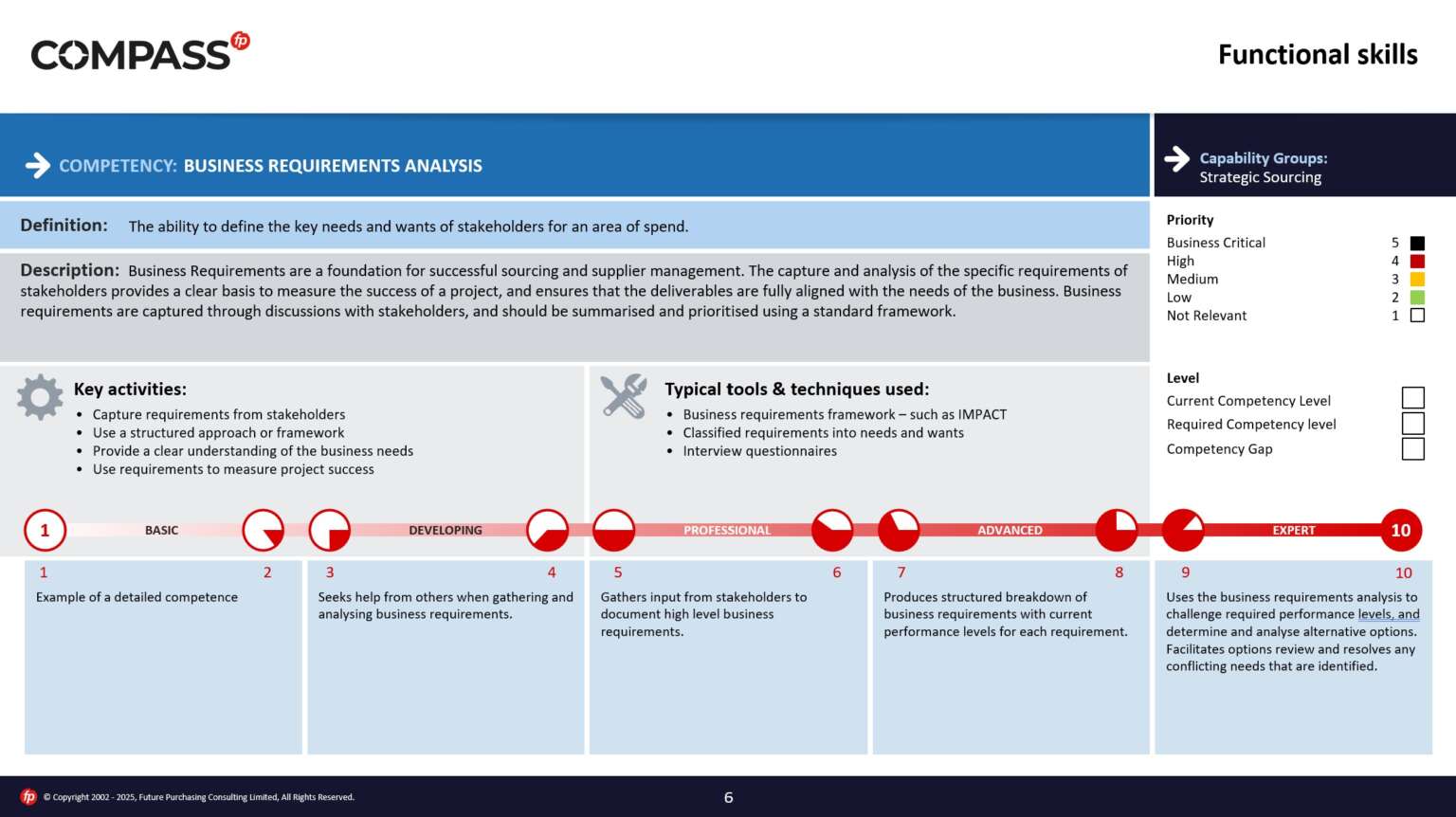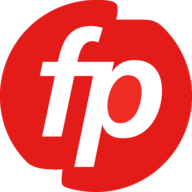
Blog
Understanding the Procurement Strategy Hierarchy to design better operating model structures
By Mark Webb |
What is a Procurement Strategy Hierarchy?
A hierarchy of strategies ensures a clear alignment between the organisation’s overarching vision and goals and the procurement team’s strategy, as well as the agreed-upon actions taken at each level. This article outlines how a hierarchy of strategies helps create clarity and alignment across the organisation.
The Procurement Strategy Hierarchy describes a cascading model of strategies. Each underlying strategy layer is derived from and aligned with the superior strategy layer to ensure a clear connection between an organisational strategy and the actions of each individual within the organisation. Starting from the organisational and business strategy, the procurement strategy needs to be designed to support the business objectives.
The Category Management strategy and operating model need to translate those objectives into processes and mechanisms to ensure alignment across categories. Ultimately, category strategies need to be created based on the aligned business requirements. This model can be further developed into supplier management and sourcing and negotiation strategies.

Using the Procurement Operating Model to create a strategy hierarchy
The Global Category Management Report and its six dimensions provide a checklist of questions to shape a strategy and operating model for Category Management. This fits into the middle tier of the strategy hierarchy and clarifies for the procurement team and stakeholders how category management will be adopted. The procurement leadership team collectively makes these decisions.
Looking upwards in the hierarchy, the category management strategy and operating model are a subset of the wider procurement strategy and operating model, which is itself shaped by the overall organisational and business strategies.
Looking downwards, the spend influenced by the procurement team is divided into manageable categories, often reflecting supply markets or internal structures.
Strategic Alignment in Procurement
These are the category groups that senior managers control through an approach we call strategic alignment. Strategic alignment is a distinct activity above category and supplier management. It is used during the business planning cycle to identify and prioritise procurement activities with senior business stakeholders and consider linkages and interdependencies between categories and suppliers in the category group. The outcome is an agreed-upon pipeline of category and supplier projects to work on. Individual category strategies sit beneath strategic alignment.
Benefits of a clearly designed Procurement Strategy Hierarchy
Ensuring alignment between the overarching vision and goals of an organization and translating them into the procurement team’s strategy, ultimately breaking them down into category, supplier, and negotiation strategies, creates cohesion across the actions taken at each level by every team member. This clarity helps everyone within the organization understand how their work contributes to overall procurement and business objectives.
When this hierarchy is well designed and communicated, category strategies are co-created with stakeholders, fully supported, and implemented at speed. Responsibilities at each level are clear, resulting in improved value delivery, risk management, and agility.
Assessing Your Category Management Maturity
We offer the Category Management Maturity Assessment to assess the alignment of your category management practices and the performance of the individual steps. Contact us to discuss the ingredients of a strong operating model and how to build one.

About Mark Webb
Managing Director
30+ years procurement experience in line management
and consulting roles.
Previous employment: Price Waterhouse, Mobil Oil and QP Group
Education: BSc in Management Science and MSc in Business by Research, Aston University
CIPS: Member
Further Reading

Blog
Skills frameworks and assessments for Procurement: What they are, why they matter, and how they work
By Mark Hubbard |
The skills required to succeed in procurement are evolving more rapidly than ever before. While foundational expertise in category, supplier, and contract management and sourcing remains important, it is no longer enough on its own. Today’s procurement professionals face a dynamic mix of rising business expectations, evolving regulatory demands, and rapid technological change, especially with the emergence of AI and digital tools.
At the same time, organisations are under increasing pressure to do more with fewer resources. With tight headcounts and a competitive talent market, leaders can’t simply hire their way to a future-ready team. Instead, the focus has shifted to reskilling and upskilling existing talent.
Skills frameworks and assessments are essential tools in this journey. They help identify skill gaps, unify diverse teams, and focus development efforts where they matter most. This blog explains what skills frameworks are, why they’re important, how skills assessments work in practice, and what benefits they offer.
What is a skills framework and why do you need one?
A skills framework is a structured outline of the key capabilities required in procurement roles, with clear descriptors of what proficiency looks like at each level. Procurement teams are rarely made up of individuals with identical backgrounds, training, or experience. A skills framework creates a shared language and aligns expectations, allowing individuals and teams to honestly assess their current skills and identify development priorities. With growing complexity in areas like ESG, risk, and digital transformation, a skills framework enables targeted learning that aligns with organisational strategy.
How to create a skills framework for Procurement
Creating a robust skills framework starts with clarity. You need clear, unambiguous descriptors for each skill mapped to specific job roles within your organisation to ensure expectations are fair and relevant for each individual. Vague or compound descriptors can lead to confusion and inconsistent self-assessments that fail to provide meaningful insights.

Established models, such as those from the CIPS (Chartered Institute of Procurement & Supply) and IFPSM (International Federation of Purchasing and Supply Management), offer strong starting points. These can be customised and expanded to reflect your organisation’s specific needs, strategic priorities, and cultural context.
Key skills to include
Many procurement skills frameworks focus heavily on technical and digital skills, but tend to ignore the importance of soft skills. Our 2024 Global Category Management Report identified stakeholder engagement and alignment as the primary barrier to success in category management and procurement. And with the advancement of technology, these skills become more important than ever.
A well-rounded skills framework should include a blend of foundational procurement skills (like category management, contracting, or negotiation), behavioural competencies (including stakeholder engagement, adaptability, and communication), and digital capabilities (such as data analysis and AI tool proficiency).
Here’s a breakdown of selected key skills to consider:

Adapting when competencies change
Procurement skills are not static — they evolve in response to the environment in which we operate. While many core competencies remain relevant over time, new requirements inevitably emerge due to changing business priorities and technological advancements. It’s essential to periodically review and refresh your skills framework to ensure it remains fit for purpose.
Skills assessments explained
Skills assessments measure individual proficiency against the defined framework, providing a clear picture of strengths and gaps. Common approaches include:
- Self-assessment: Individuals rate themselves against each defined skill using the framework’s descriptors. This method is easy to implement but may be influenced by differing interpretations or personal bias.
- Manager assessment: Line managers assess team members based on observed performance. While more objective, this is limited to the manager’s direct experience with the individual and may not capture the full picture.
- Moderated assessments: A blend of self and manager assessments, where results are calibrated through manager-led or external moderation to improve consistency and reduce subjectivity.
- 360-degree feedback: Collecting input from peers, direct reports, and other stakeholders. This holistic view offers richer insight, especially for soft skills and cross-functional collaboration.
Skills assessments should be completed at regular intervals. By re-evaluating individuals and teams regularly, you can track progress, measure the impact of development efforts, and adjust learning plans as needs evolve. This ongoing cycle of assessment and improvement supports individual growth and helps organisations build more capable, adaptable procurement functions.
Skills assessments are often supported by digital platforms, which simplify distribution, data capture, and analysis. Digital tools also enable rapid reporting across individuals, roles, regions, or business units, highlighting both common skill gaps and standout capabilities. One of the most valuable outcomes of skills assessments is their ability to reveal hidden talent — skills within teams that haven’t yet been fully utilised.
Benefits and challenges of skills assessments
The benefits of a skills assessment
A well-designed skills assessment delivers value at both the individual and organisational level. Key benefits include:
- Strategic alignment: By selecting the right set of competencies, assessments help ensure that procurement capabilities are aligned with broader business strategy, positioning the function to better support organisational goals.
- Career development: With a clear view of current capabilities, organisations can design meaningful development pathways, identify high-potential talent, and build robust succession plans.
- Consistency: Assessments create a shared language and a consistent benchmark for evaluating skills across teams, functions, and geographies.
- Smarter project resourcing: Understanding who has what skills enables better project matching (putting the right people on the right initiatives).
- Prioritised Learning: With visibility into strengths and gaps, leaders can more confidently focus training investments on the most critical skills gaps.
Potential challenges
While the benefits are compelling, skills assessments inevitably face challenges. Recognising them — and tackling them proactively — can help ensure success. Common challenges include:
- Resistance to participation: In some regions or cultures, assessments may be met with scepticism or concern. Framing the process as part of organisational development is key to gaining trust.
- Leadership buy-in: Leadership plays a critical role in setting the tone. If leaders don’t champion the initiative or allocate time for it, uptake will be limited. Clear communication about the strategic value of the assessment is essential.
- Misaligned or generic frameworks: If the skills framework doesn’t reflect the unique context of your organisation, it may cause confusion or disengagement. Tailoring the framework to your specific roles, goals, and maturity level is crucial.
- Lack of visible outcomes: For individuals and managers to fully engage, they need to see tangible results from the effort. Linking the assessment to development plans, promotions, or measurable improvements helps demonstrate its value and build momentum.
Putting it into practice with Future Purchasing
Understanding the skills your procurement team requires — and assessing current capabilities — is the first step to building a high-performing, future-ready function.
At Future Purchasing, we support organisations in designing and delivering skill profiles and assessments that provide clear, actionable insight into current competency levels. Our Compass Skills Assessment tool gives you a consistent and objective view of individual and team performance across key procurement capabilities, enabling you to identify strengths, surface hidden talent, and target development where it matters most.
But we don’t stop at diagnosis. Based on assessment results and aligned to your strategic goals, we help design tailored learning and development programs that close capability gaps and accelerate progress. Whether you’re aiming to raise the bar across the function or deepen expertise in specific areas, our approach ensures training is relevant, role-specific, and impactful.
By combining structured assessment with targeted upskilling, we help procurement teams unlock their potential and deliver measurable value, both now and in the future.
Ready to get started?
If you don’t have a skills framework aligned with your organisational structure and job roles yet, now is the time to act. Get in touch to discuss your current setup and how Future Purchasing’s Compass Skills Assessment and tailored learning programs can help you build a robust foundation for long-term performance.

About Mark Hubbard
Director
30+ years experience in procurement and supplier management, in line and consulting roles
Previous employment: Positive Purchasing Ltd, SITA,
QP Group, BMW, SWWS, Rover
Education: BSc in Engineering Metallurgy, MBA University of Plymouth
CIPS: Member
Further Reading
Video
Future Purchasing’s KONGSBERG Maturity Assessment Case Study
By Future Purchasing |
Kongsberg maturity assessment
Rob Anthony talks to Mark Webb and Matt Jones about how the Future Purchasing Maturity Assessment has improved the value category management brings to KONGSBERG
The speakers:

Rob Anthony
SVP Global Supply Chain
Kongsberg Maritime
Rob Anthony is responsible for Global Supply Chain in Kongsberg Maritime and Kongsberg Gruppen Supply Chain for Indirect Procurement and Sustainability. He is also UK Country Manager and Board Director of Kongsberg Maritime Ltd.
Rob has 26 years of Procurement and Supply Chain experience and prior to joining KONGSBERG in 2019, he worked for Rolls-Royce Plc, in the Marine, Civil Aerospace and Defence Aerospace Businesses.
Rob has experience of living and working in Germany and Norway and is based in the UK.

Mark Webb
Managing Director
Future Purchasing
Mark is the managing director of Future Purchasing – a specialist procurement consultancy and educational provider. Since establishing the firm in 2003, he has supported over 100 global organisations to successfully implement category and supplier management.
With a career covering multiple sectors – including technology, industrials, energy, pharmaceutical, telecoms, transport, hospitality, media, FMCG, financial services sectors, and the public sector – Mark brings deep cross sector expertise to every client.
Before founding Future Purchasing, Mark spent 11 years in consultancy and operational roles at Price Waterhouse, Mobil Oil and QP Group, where he developed a strong foundation in procurement and business transformation.
He is also the co-author of six influential global reports on category management in collaboration with Henley Business School. The most recent, “Influence the Future”, was published in April 2024 and continues to shape thinking in the procurement profession.

Matt Jones
Director
Future Purchasing
With over 30 years of global consulting and industry experience, I am a proven strategy and operations leader, building organisational capability and capacity to deliver results in complex UK and International environments. During which time I’ve held key roles in government and industry as a commercial, procurement & supply chain professional.
Having a background in engineering and lean operations management, I’ve a successful track record of building and leading high performing teams, firstly at Jaguar Land Rover, then Bunzl, Deloitte and PwC.
I have consulted with organisations across Central and Regional Government, Healthcare, Justice, Defence and Transport. I’ve travelled extensively and enjoyed working with people from different backgrounds and cultures, including 5 years living and working in the Middle East.
I’m passionate about working alongside professionals, to help both individuals and teams to develop and realise their full potential. Utilising data and enabling systems to drive performance and employee & customer satisfaction.
With a growing interest in the deployment and adoption of enabling digital technologies, often using Artificial Intelligence, that are impacting our personal and professional lives.
Transcript
Mark Webb
Hi, Rob. Thanks for joining us today. We work with you recently. Really enjoyed it. Looking at the Catman maturity within Kongsberg. And we’ve got a few questions we wanted to ask you about the approach and the value in the team that you and the team got from it. So. Well, firstly, would you like to tell us a little bit about yourself and Kongsberg?
Rob Anthony
Thanks, Mark. Pleasure to be here. My name is Rob Anthony. I’ve worked in supply chain for over 26 years. I did 20 years with Rolls-Royce Aerospace and Marine and then, six years ago, I moved over to Kongsberg when Kongsberg acquired Rolls-Royce marine. And I’ve been working in Kongsberg maritime, but also with the group. My role since then, my career has mainly been in supply chain, but procurement, logistics and planning. And to talk a bit about Kongsberg. So Kongsberg means kings Mountain. Khong is king, Berg is mountain. It’s a company that’s actually existed since 1814, actually created when Norway got its first constitution and has a strong defense business. Historically as well. And then since oil was formed, has increasingly a strong maritime business. And with the acquisition of Rolls-Royce marine six years ago, maritime is the biggest business with defense also a very, very strong, business. We also have two other business areas in the company, one called Kongsberg Discovery, which is about discovering the ocean, subsea, capabilities, and surveillance. And we also have a smaller, digital business. So as a company, it is a Norwegian company, with locations in 40 countries, just over 14,000 employees and just, nearly, 50 billion NOK in revenue. So quite exciting business, across defense, maritime businesses globally.
Mark Webb
Right. And how is supply chain set up with maritime.
Rob Anthony
Yeah. So I can talk about supply chain just as a, as a group level and then about maritime. So, Kongsberg has quite a small, headquarters. So, group responsibilities are sitting within the different business, what we call business areas. I’m responsible for group indirect and group supply chain activity, sitting within the maritime business. And as an example, the CIO for it actually sits within defense business. So we have different roles sitting in the different business areas. But within those strong, business areas with a very small headquarters, we have divisions. Divisions are organized by group products and systems. And, you know, and then within those divisions, we have business units that are also aligned by product, family and, PNL and we really are focused on having a product line structure. So how, focused on our customers. So how is supply chain set up? Well, the majority of our supply chain businesses actually sit within those divisions and business units, close to the sites. And, and also in the regions around the world, particularly USA, Americas, EMEA and Asia. But we also have a smaller central team, covering, shared services, process tools and capabilities and areas that we’ve agreed will be, will be better when, when centrally. As part of that, we also have a team not just in Norway, but, you know, around the world, but we also have a team, a shared service office for supply chain that we’ve established in Krakow. We established that when we involved voice and we’ve continue with that, and we now have over 60 people, supporting multiple businesses, across Kongsberg, on supply chain and procurement.
Mark Webb
Excellent. Yeah. So I was wondering, Rob, how long have you guys been doing category management for.
Rob Anthony
Yeah. Thank you. That’s a that’s a good question. So, we actually in business marine, set up strategic procurement from, from around, 2011. And we’ve been really deploying strategic procurement and category management since then. So about, 14, 15 years, it’s been a journey, in our maritime business, there was a very strong growth period until around 2015, when there was, a downturn. And actually now we’re seeing maritime is also in a growth period. So obviously category management has different priorities when you’re in a growth or in a, in a downturn. Obviously, we’re still focused on the key areas, but maybe, maybe with different priorities. So, strategic procurement has continued since then. We have some of our, people have been, category managers and working in strategic procurement for that time frame. So we have some as a good level of experience, but we also have new technologies and also new regions that we’re covering that we need to be ready for our main challenges right now, being ready for the growth, making sure we’ve got enough capability and capacity around the world. And also skill sets that we have skills and capability to manage those, those categories.
Matt Jones
Hi, Rob. I was just going to I mean, you started to talk about it anyway, but I was going to just ask you a question about, you know, the opportunity you feel there is in category management. We’ve met a lot of your team and we’ve, we’ve been talking to you for a while and understand that you’re good in many areas of category management, but just what do you think the opportunity is now to go from good to great?
Rob Anthony
Yes. Thank you. Thank you for the question. So, we we’ve been doing category management for a while and strategic procurement and, you know, quality, cost delivery. We feel that we’re delivering, a good level, a reasonable level of cost savings every year. We’ve got good sourcing plans. We’ve got a reasonable level of contract coverage. We have good supplier engagement. So that’s fine. You know, we don’t need to do anything else. But if you take a step back and you say, actually, we’re capturing the full strategic value that we could put to strategic procurement and management. That is a question. And do we need to look at things, with an independent view to sort of test where we are, compare ourselves with, competitors or with other good industrial benchmarks and say, okay, we might be doing, as you said, a good job, but are we doing a great job? And how can we actually, understand what that gap might be. So really, the reason, that, we worked with Future Purchasing and we decided to take a look at category management was, was more around opportunity, you know, what more opportunities there. How can we maximize the strategic value? And the reality is that 95% of people in supply chain are working on operations or working on deliveries for this year. So how do we uplift and how do we think about capturing our strategic value and also thinking about risk management? At its 2013 up to 2035,
Matt Jones
Great. I was going to just say, you know, we worked with you for a really rapid sort of maturity assessment and, I was just interested to see how you felt. We as a team worked with your team and just maybe you can share some insights in terms of the approach and what you felt was of value.
Rob Anthony
Yeah. So we kicked off a piece of work with future purchasing. We actually worked with you before, I think about 8 or 10 years ago. And we knew each other, and we stayed in contact, and we felt now was the right time to do it, to do a benchmark. What we were looking for was an independent assessment, and also more of an advisory engagement where you, you come in, we work together, you do some kind of holistic, evaluation with some industry benchmarks. We can have a good engagement discussion about that, and then we can, you know, build that into our strategy for the future. So that was the, that was the goal. Working with future purchasing went very well. I think you’re very open. I think we have a good sounding board discussion. One very important point is your listening, which we appreciate because one of the challenges when you’re doing benchmarks is, fixed views on applicability, which may be different on the industry. So, getting a tailored benchmark that can fit with the industry while still bringing in the benchmarks and challenging yourself is is important. And when we talk particularly about maritime, maritime doesn’t fit easily into the benchmarks. You know, when you look at the drop down menus on these, there’s maritime is never on there, you know? So aerospace, transportation, industrial, equipment. So getting, we found it hard in the past to get good tailored benchmarks for maritime. So that’s, we definitely found it very useful engaging with future purchasing and fitting the benchmarks with our business.
Matt Jones
So one of the things, observations I have, is we spoke to you about in a series of questions that we would we’ve asked the industry over many years and how they would, how you’d score yourself or your team score themselves. But also you asked us to tailor some of the questions specifically to, to your business.
Rob Anthony
Yes, we did. And, we appreciate that. And we also, agreed to do interviews rather than, a survey by email. That is we do a lot of surveys. Also, really getting that 1 to 1 engagement through interviews. People open up a bit more, and, and also in Norway and maybe pass the Norwegian culture in the company. The importance of dialog is very important. And what they talk about is direct dialog. So you actually speak 1 to 1 with someone and you have direct dialog on and, on the topic. And you allowed air to breathe. Have time to sort of talk about it, without rushing the conversation. So having, 1 to 1 interviews with enough time really allow people to open up, and pull that information through, and lastly, actually get them engaged, because if you interview people and then you start to do an improvement program, people feel connected because they’ve already given their input.
Mark Webb
And, Rob, how did you find the six dimension approach that, we used? Because, that was pretty fundamental to the approach.
Rob Anthony
And so I think it’s actually behind you on the wall, in the six aspects. So, you know, we can see the different aspects that we looked at. And the reason we found this very positive was bringing in a different aspects. So we’re looking we’re open minded, we look at different areas. Maybe we hadn’t thought about, I’m looking at your chart behind you, but we have, process and technology, stakeholder engagement, capability and mindset, organization structure, different areas. Maybe we hadn’t thought about, and then focusing not just on cost for the value.
Matt Jones
That’s really good. And I suppose just to finish, you know, we’ve worked with you on the maturity assessment. You’ve got some insights, you, you’ve started to do something with those insights. What next in terms of how you taking forward the, the value that you found from the exercise?
Rob Anthony
Yeah. So we’re actually taking, strategic we’re putting a strategic improvement plan together, taking into account the feedback from future purchasing, but our own, we actually had a full on workshop after our engagement with each purchasing in terms of also getting the feedback directly from the team. And then we’re going to be building that into, into our improvement, strategic improvement program for cash management and strategic procurement moving forward. We’re already getting good questions from the business. You know, what is the strategy for 2035? How are we going to manage risk management in the future? How will we I think the phrase is being is future proof. How are we able to take advantage of the opportunities but also have the flexibility to cope with the global risks that are out there at the moment? And the dynamics that we see, that take us on, on its growth path. So we’re going to be looking at all those aspects also looking at digitalization and how can we also do things in more efficiently as well and more effectively? So we’re going to look at all those aspects and build that into the plan. We have some milestones coming up. So we actually have Global supply conference in, in October. We’re going to try to, be able to share the framework a little bit also with our strategic suppliers, when we have that event. So we’re not going to rush it. We’re already delivering. So we’re going to continue delivering, but we’re going to try to really build that plan. And then work out which priority areas we want to do first.
Matt Jones
Great. Then we’ve reached the end of this interview. I think, Mark, you maybe have one last question and then we’ll try and wrap up.
Mark Webb
Yeah. We just you know, the one key takeaway you would say, Rob, from your engagement with us over the last few months now.
Rob Anthony
Thank you. Mark. So my one, if there’s one key takeaway from this activity, our, president, Lisa, she has introduced a value for us to consider in the company last year, which we’re continuing with, which is being curious or staying curious, curiosity. So what does that mean? What that means? As a value, that means that you’re open minded, you’re open to new ideas, you’re willing to look at new ideas, you’re open to feedback. And that’s something that we’re trying to bring through a whole business and is very relevant to what we’ve done with future purchasing. So staying curious is, is my big, takeaway at the end.
Mark Webb
Excellent. Well, hopefully all of the ideas that the maturity assessment threw out, which was, was a heck of a lot, which hopefully we distill down quite neatly. But yeah, there was a lot of curiosity from the teams on how they could improve for sure. Thank you. Thank you all. Thanks. Appreciate it.
Related Insights

Blog
Addressing the future challenges for Category Management
By Mark Webb |
The 2024 Global Category Management Report is an assessment of the current state of Category Management in Procurement. But instead of just comparing the current state to the past, it also aims to anticipate future challenges and priorities. Therefore, we included a question asking participants to identify their greatest challenge for category management in the future. This article summarizes the findings.
Stakeholder engagement, alignment, and understanding remain the central challenge for category managers.
31% of participants identified the primary challenge to succeeding with Category Management as how stakeholders get involved in the development of category strategies. This includes how to create better alignment with stakeholder priorities, develop their understanding of category management as a business approach, and build engagement during the strategy development process.
While freeing up time in stakeholders’ schedules and creating a better understanding and appreciation of the importance of Category Management is important and noble, ensuring that category managers make effective use of the available time is vital for the success of Procurement. Equipping them with the necessary soft skills for effective stakeholder engagement, communication, and storytelling is crucial for unlocking business requirements and crafting convincing narratives for their strategies. The Category Management toolkit should include tools that facilitate stakeholder identification, mapping, and communication management to ensure consistent application.
Resource availability and skills undermine the best intentions
For 17% of participants, the necessary skills to drive effective category management are a significant issue. Additionally, 5% of participants confirmed that their category managers did not always have the time and space to apply their skills appropriately within a category environment.
It takes significant effort and time, including appropriate training and coaching, to develop the skills necessary for applying category management effectively. With increasing challenges finding and retaining talent, this investment might not be sustainable, especially as knowledge often remains in individuals’ heads or desktops. Investing in capabilities that support knowledge management is, therefore, an important step for securing this investment.

Risk and macroeconomic factors are an evergreen challenge
9.5% of participants identified the pressures exerted by increased supply chain risk and macroeconomic factors, such as inflation, supply shortages, and workforce disruption, as important challenges that need to be addressed through Category Management. This speaks to the diversion of resources into combatting not just short-term but also more structural issues within broader economies.
To ensure that risk analysis is not limited to isolated status assessments as part of category strategies, supplier and supply chain risks must be associated with clear risk mitigation strategies. A centralised initiative management capability can help create a holistic view of potential risks and ensure that risk mitigation activities can be tracked.
Limited category management process leads to limited results
Notably, 6.5% of participants cited a lack of or a limited category management process as their greatest challenge. This may indicate a lack of genuine understanding of category management and what it takes to make it work successfully.
Our experience suggests that a proper operating model is often lacking, with limited support for category managers and limited leadership and governance. Designing an operating model that puts category management at the centre and aligns its different dimensions will ensure an end-to-end process with clear processes, tools, and roles and responsibilities, unlocking the value of Category Management.
No culture for category management means a cultural change is needed
A similar-sized group of 6.5% of participants noted that their organisation was not well-positioned to adopt a strategic category management approach to acquiring goods and services. This was caused by a lack of understanding of how it might work, too much focus on other areas of procurement, and a lack of senior management understanding of how category management could add value.
To understand this challenge, we must fully analyse the expectations, current practices, and opportunities offered by Category Management. A maturity assessment will allow us to identify the reasons, potential opportunities, and a clear roadmap towards the desired end state.
Data, technology, automation, and AI – a cry for help
The advent of AI is transforming the overall business landscape, and many respondents mention a lack of digital tools, data availability and quality, process automation, and the use of AI as both a potential opportunity and a challenge for their success in category management.
Investing in technology to support spending and data analytics, market intelligence, category strategy development, initiative management, and sourcing execution is a significant demand for any organization. It is crucial to identify the most pressing challenges and pinpoint capabilities that can address multiple pain points while seamlessly integrating into the broader technology ecosystem to build a compelling case for technology investments.
What’s next: influencing the future of Category Management
Each of these challenges can be addressed through a range of interventions, ranging from targeted and ambulant approaches to broad and intrusive ones. Regardless, success and sustainability are more likely when a well-thought-out category management improvement plan is in place, outlining the necessary steps toward achieving category management excellence.
With over 20 years of experience in Category Management and more than 100 client engagements, we have acquired extensive expertise in this field. We are confident that our work on operating model design, our proprietary toolkit, and transformation support can help you establish a solid foundation in Category Management and address future challenges. Please reach out to discuss our maturity assessment and how we customise our approach to meet your unique requirements.
Further reading:

About Mark Webb
Managing Director
30+ years procurement experience in line management
and consulting roles.
Previous employment: Price Waterhouse, Mobil Oil and QP Group
Education: BSc in Management Science and MSc in Business by Research, Aston University
CIPS: Member
Further Reading

Blog
AI accelerates category strategies’ delivery
By Mark Hubbard |
We have been utilising an AI-driven approach that dramatically accelerates category strategies’ delivery with some of our most progressive clients.
As discussed in our article on the next stage of AI and digital category management, AI is nowadays able to analyse and scrape market information, review existing and predict future spending, and propose value levers based on your business needs. This allows category managers to develop a draft category strategy in hours of work, not weeks.
The ‘Human x Machine’, augmented approach frees up category managers to focus on activities like stakeholder engagement, supplier management, business alignment, and innovation scouting – activities that can set your procurement operation apart from the competition.
The system and supporting approaches provide:
- A consistent approach and holistic methodology for developing data-driven procurement and category strategies.
- A step-by-step, guided approach to developing strategies, from spend analysis to AI-backed recommendations and initiative management and delivery.
- High-quality stakeholder management and engagement approaches that support fact-based and meaningful discussions to deliver more value.
The integrated approach: Procurement, AI, and Expert Coaching
To realising the promise of high-quality category strategies and maximise the value delivery, an integrated approach to transforming the procurement sector influence most of your spend is need. We believe that a blend of foundational knowledge, an AI system, and expert coaching is needed to develop sustainable skills and embed technology within the procurement process. This combination of skills and tech unlocks high-speed delivery and value beyond sourcing.
When category managers understand the fundamentals of the approach and how the category strategy is derived, the AI system’s use will be optimised. Category managers need support throughout the development of the strategy in co-creating strategies, interpreting recommendations, and communicating their plans. An integrated approach that helps embed the technology in the operating model, provide the skills to use the solution through excellent and time-proven training, and improve hard and soft skills through coaching ensures maximum returns on the investment you make.
How does this work?
Understanding the organisation, processes, objectives, and capabilities is the starting point for the integrated approach. Ensuring all elements are designed around business priorities is key to ensure a short time to value of the transformation.
Using a skill assessment will allow to identify the key capabilities needed by category managers. The category teams’ skills and capabilities need to be at a level where the development of category strategies is fully effective. This usually involves targeted training looking at procurement, system, and change management skills and behaviours, next to basic tool enablement training.
After providing the initial training, category teams are encouraged to utilise the AI system to its full extent and deliver category strategies with deep insight, a clear link to business requirements, and initiatives that deliver broad value. Co-creation of strategies with stakeholders is a critical success factor for maximising the impact and adoption of category strategies and effectively delivering value. The process of strategic alignment, both embedded in the tool and fostered through coaching, ensures that any activity undertaken will deliver genuine value where it matters most.

The system tracks the progress across all category strategies in the organisation – current status, strategies developed, initiatives by strategy. It is always up to date, which frees up considerable time previously spent on reporting that can now be used to look for ways to unblock stalled initiatives or start additional initiatives.
The integrated approach drives consistency in both delivery and output. Once in place, this consistency increases governance, improves communication, and increases the impact of Procurement.
The integrated approach drives consistency in both delivery and output. Once in place, this consistency increases governance, improves communication, and increases the impact of Procurement.
Future Purchasing has years of experience working with teams on optimising their operating model to incorporate Procurement AI systems, enable category managers with the skills needed to succeed in today’s procurement world, and co-create and deliver strategies and value to maximise business impact.
If you would like to talk to me about an AI-driven approach that dramatically accelerates category strategies’ delivery email me below or click on the “Let’s Talk “button below to get direct access to my diary.

About Mark Hubbard
Director
30+ years experience in procurement and supplier management, in line and consulting roles
Previous employment: Positive Purchasing Ltd, SITA,
QP Group, BMW, SWWS, Rover
Education: BSc in Engineering Metallurgy, MBA University of Plymouth
CIPS: Member
Further Reading

Blog
Category management vs strategic sourcing – so much fuss for little difference?
By Mark Hubbard |
From our research, it is clear that many organisations still see category management as simply another term for strategic sourcing. However, we believe that category management and strategic sourcing focus on different aspects and have distinct goals.
What is category management in procurement
Category management is the process of organising spend into groups of related products and services according to their characteristics, market dynamics, or business objectives. It is a strategic end-to-end process for buying goods and services that aligns business goals and customer requirements with supply market capability and maximises long-term value for the organisation.
It is a cross-functional activity that requires organisations to work collaboratively to understand internal stakeholder needs and examine category spend, the supply market, and suppliers to identify opportunities for savings and value improvement as well as aligning your procurement strategy with your business goals.
Category management helps build long-term relationships with suppliers and leverages their expertise and innovation. It is a way to manage categories for their whole life-cycle, and it sits above procurement activities, such as strategic sourcing, Supplier Relationship Management, or Contract Lifecycle Management. Category strategy outputs fit into four areas — sourcing, SRM, contracting, and internal operational change and implementation.

What is strategic sourcing
Strategic sourcing is a procurement process used to source goods and services from the available supply market at a specific point in time. It is aimed at selecting the right suppliers to achieve the lowest cost while meeting the specifications and required timelines. Its primary goal is to achieve price/cost reduction via aggregation and consolidation through negotiations. The process includes evaluating third-party requirements, analysing current spend, identifying potential suppliers, developing the route to market strategy including single/multi suppliers, lotting strategies, etc., and then running a supplier selection process or RFP and negotiating contracts. It is an effective way to deliver sustainable cost savings and promote healthy market competition between suppliers. It is often an output from a category strategy.
Category management vs. strategic sourcing – subtle differences, big implications
While many steps and processes are similar across Category Management and Strategic Sourcing, there are some subtle differences that with significant implications on how both are applied.
i. Strategic sourcing is focused on price reduction. Category management is focused on broader business value, such as risk, revenue, innovation, and cost, which may also include buying less (e.g., demand management) or buying smarter (e.g., specification management).
ii. Strategic sourcing is a procurement process focused on “sourcing events” for selecting suppliers that requires limited business input outside of specifying the requirements.
Category management on the other hand is an enduring cross-functional business process that requires intensive collaboration with a broad set of business stakeholders to develop deep insights on internal business requirements to create and implement wide ranging strategies to enable the organisation to behave as an intelligent customer in “what it buys”.
iii. Strategic sourcing provides a good understanding of the external market at a specific point in time and helps the organisation to be good at “how it buys”. Category management delivers deep external market expertise around the product structure, supply chains, the supplier landscape, and regulatory and risk factors.
iv. Category management delivers deep internal and external market expertise, cohering stakeholders, and providing governance to enable the organisation to behave as an intelligent customer in “what it buys”. Strategic sourcing alone provides a good understanding of the external market at a point in time and helps the organisation to be good at “how it buys”.
v. Strategic sourcing is usually focused on solving a specific demand and negotiating respective contracts with a timeframe of 1-3 years. Category management determines the go to market and approach for an entire category, which can span multiple events, and focuses on cohering stakeholders (demand), and providing governance to steer the organisation in a defined direction over a 3-5 year horizon.
Combining Category Management and Strategic Sourcing to execute strategies for increased value
In summary, category management and strategic sourcing should not exist in isolation. Category management provides the business intelligence and governance to maximise business value and, when combined with strategic sourcing, enables you to execute the procurement aspects effectively — so you are good at both what you buy and how you buy it.
Where organisations focus on one over the other, they often either end up with category strategies that struggle during implementation or with disconnected approaches for the same goods and services across regions, countries, or business units. Developing an Operating Model that clearly acknowledges and defines processes, roles and responsibilities, and handover points will ensure that organisations achieve the best of both methodologies and create increased customer value. This will become even more important with the advancement of digital tools and AI in both areas and the advancement of data-driven procurement.
If you want to discuss how your organisation is performing and how to design an operating model for seamless best-in-class processes, please speak to us about our maturity assessment.

About Mark Hubbard
Director
30+ years experience in procurement and supplier management, in line and consulting roles
Previous employment: Positive Purchasing Ltd, SITA,
QP Group, BMW, SWWS, Rover
Education: BSc in Engineering Metallurgy, MBA University of Plymouth
CIPS: Member
Further Reading
Blog
How to accelerate your Category Management adoption in 2025
By Future Purchasing |
Maturity assessments have a bad name. While leadership teams search for ways to increase resource efficiencies and effectiveness, many organisations lack the structured approach to review their processes and identify areas for improvement.
This article outlines how to perform a maturity assessment of your category management practices and translate the findings into actionable improvement opportunities and accelerate adoption.
The performance of your procurement organisation is relative
Everything is relative in Procurement. We collect three bids to assess the relative competitiveness of proposals. We create strategic options and scenarios to determine the implications of our choices. We are hardwired to compare ourselves to others. That is why the desire for benchmarks will never go out of style.
We perform the biggest benchmarking study in Procurement for Category Management and publish the bi-annual Global Category Management Report, now in its 6th edition. We are neither analysts nor researchers but strong believers that understanding trends and patterns allows us to identify opportunities for improvement. Just like analysing spend helps you identify new savings opportunities.
Procurement thinks it is better than the numbers say it is
In our recent webinar, ‘From Benchmarks To Traction’ we discussed how to embed Category Management across the Operating Model, how to build effective category teams, and how to continuously improve processes. The discussion was based on the findings and insights of the 2024 Global Category Management Report, the most comprehensive source of benchmarking for Category Management.
The Report found that 68% of available value remains uncaptured across the value dimensions of cost savings, risk reduction, and stakeholder value. While certain reasons for value leakage exist across industries and companies, many aspects are highly specific and unique to an organisation.
External benchmarks are a powerful tool for assessing the maturity of organisations and processes
Leveraging comparative insights not only helps to gain an understanding of your specific situation but also helps identify areas for improvement and opportunities for transforming your organisation more thoroughly. Unfortunately, verifiable benchmarks are hard to come by. And turning them into practical actions is even harder.
If done right, benchmarking can help you
- Identify strengths and improvement opportunities for your organisation
- Understand the efficiency of your Procurement resources
- Create a common understanding and commitment across the leadership team
- Establish a baseline for tracking performance over time, and
- Estimate additional value available in cost savings, risk reduction, and stakeholder value by becoming a high-performing organisation.
Insights without actions are useless
Nobody has ever been promoted for admiring a problem. Benchmarking is not done for the sake of benchmarking but to generate insights. And insights need to be acted upon. An assessment, therefore, must break down the findings in a structured format and into digestible opportunities that the organisation can act upon.
The identified improvement opportunities should be evaluated for their ease of implementation and their expected impact. Depending on the size of the analysis and the number of opportunities, they should be clustered and spread across a realistic time horizon. By breaking them down this way, you create a roadmap of opportunities towards a desired end state that can be broken down into concrete steps and actionable tasks.
Don’t do this alone
20+ years in Procurement consulting and 100+ projects have taught us that theory is great until it meets the real world. For over a decade, we have published the Global Category Management Report with more than 100 specific ideas for improving on the 60+ metrics it covers to help organisations benchmark themselves. We have seen progress in the results. Very slow progress.
That is why we have developed the Future Purchasing Maturity Assessment. Based on our Category Management Operating Model Framework, derived from 12 years of research with Henley Business School, the maturity assessment is designed to provide a specific evaluation of your situation, identify practical opportunities, and develop a focused roadmap of initiatives for strengthening your Category Management approach.
It benchmarks your performance versus global leaders and your sector to pinpoint where you are on your Category Management journey and to identify necessary adjustments to the current operating model that will have a big impact on overall process adoption and value delivery. The result of the assessment is a practical list of opportunities that turn Category Management into a competitive advantage and value driver for your organisation.
The Path to Category Management Excellence
Our overall objective is to help you reach excellence in category management and accelerate CatMan adoption. Excellence can be reached in areas like
- Resource efficiency
- Strategic alignment with business priorities and stakeholders
- Savings and value delivery, and
- Operational and supply chain risk reduction
The assessment is structured around the six proven dimensions of category management excellence:
Category Management strategy: defines how category management supports the delivery of the organisation’s strategic objectives, establishes category management objectives and KPIs, and formalises the plan to adopt and improve category management.
Stakeholder engagement: explores collaboration and cross-functional working between procurement and its stakeholders. It looks at how well category management is aligned with stakeholder processes, whether strategies are co-created, and whether annual plans of category projects are jointly developed.
Organisation structure: focuses on how Procurement is set up in terms of the organisational design, roles and responsibilities, and time allocations. It considers the resource balance across the team to manage category strategies, sourcing, and supplier management.
Capability & mindset: builds the critical category, technical, and behavioural skills for the excellent application of category management. It includes the definition of category management specific competencies, skill development, and whether procurement leadership champions category management.
Process & technology: includes the core Category Management toolkit with process steps, templates, and guidance. The toolkit ensures inputs are consolidated into a strategy document, supports the identification of value levers, and governs strategy development, approvals, and implementation tracking. Technology is digitally enabling and automating some of these tools and processes. Examples include spend analysis, market intelligence, strategy development, and execution planning, with some being supported by AI.
Value impact: defines and evaluates the deliverables from category management, including category strategy quality, value delivery across cost savings, risk reduction, and revenue and stakeholder value.

Six Dimensions of Category Management Excellence
Step-by-step guide to performing the Maturity Assessment
Based on the outlined dimensions, Future Purchasing has developed an online survey to capture the current state of category management practices. The responses are consolidated, analysed, and benchmarked against industry leaders to form the basis for a high-energy 3-hour workshop with the procurement leadership team, where the initial findings for each question will be discussed and prioritised. The final recommendations are documented in a clear roadmap towards category management excellence – tailored for your organisation.
1 Planning
To initiate the assessment, we jointly define the benchmarking participants, align the timeline, and perform an alignment briefing with the Procurement Leadership Team. We establish the benchmarking assessment and communicate it to the involved participants.
2 Current Performance Assessment
The assessment starts with us building an understanding of your Procurement fundamentals around spend, KPIs, policies, operating model, org structure, etc. It also covers more specific questions around the CatMan adoption plan, ownership, spend coverage, 3-year value delivery, and the current pipeline.
The assessment includes a GAP analysis of CatMan processes and tools, training, and relevant interfaces like Supplier Relationship Management, Sourcing, and Contract Management. To validate the gained insights, we review your top 10 category strategies and interview category managers to understand their time allocation and challenges.
3 Maturity Benchmarking and Workshop
1-to-1 interviews are held with PLT to understand CatMan expectations and challenges with Category Management. All benchmarking participants complete our 15-minute online survey to provide information across the six dimensions.
Survey responses are consolidated, and we create a draft report v1 that covers each question and compares it with global CatMan leaders.
We then hold 3-hour PLT workshops to explore the results for each KPI in detail, confirm the current situation, and jointly develop tailored improvement recommendations. The workshop generates lots of energy, ideas, and alignment on the required changes for securing the untapped potential of Category Management.
Your performance will be benchmarked across 60+ KPIs

4 Maturity Report and Roadmap
Based on the workshop output, we estimate the scale of the opportunity in terms of value delivery and resource efficiency. We finalise report v2 with an analysis of available strengths, gaps, improvement recommendations, and a practical development roadmap.
We then hold a 1.5-hour feedback workshop with the PLT to agree on key findings, recommendations, and the scale of the opportunity. The final output is a full report covering all six dimensions and a set of targeted recommendations to maximise adoption and transform the team into a high performing CatMan operation.
Transformation is an action word, not something that happens to you
We work with you to develop recommendations that drive capability uplift and value delivery across the dimensions of the Category Management Operating Model. We detail out the identified opportunities and enable you to decide on the priorities you want to tackle. Together, we build a tailored roadmap to strategic procurement and category management excellence and accelerated adoption for your organisation.
If you are interested in driving the transformation of Procurement, we would love to hear from you. While our framework is standardised, your situation is unique and can require targeted improvements or heavy intervention. We’re here to help.

Future Purchasing
If you want to get more value out of your procurement spend, or you just want to know more about us, request a callback above or send us an email and we will come straight back to you.
Further Reading

Blog
From Compliance to Innovation: Redefining Public Procurement in 2025
By Future Purchasing |
Public procurement departments are navigating a complex landscape of challenges, including regulatory shifts, inefficiencies, difficulty building resilient supply chains, and an increasing demand for sustainability and transparency.
Rapid technological advancements and the pressure to deliver value while managing limited budgets further exacerbate these issues. The recently introduced Procurement Act 2023 aims to address some of these challenges; however, to become truly resilient, Commercial departments must take charge of their transformation.
This article highlights the key challenges in public procurement in 2025 and beyond and provides tips for procurement departments to mitigate them effectively.
Public Procurement Challenges in 2025
The challenges public procurement is facing can be grouped into three main categories:
- Regulatory challenges
- Market-related challenges
- Organisational challenges

Regulatory Challenges
Complex regulatory environment and excessive bureaucracy
The regulatory challenges impacting public procurement are primarily attributed to complex legislation and excessive bureaucracy. There are over 300 regulations relating to public procurement in the UK. Government agencies have notoriously complex procurement processes, with administrative tasks and excessive bureaucracy often delaying the procurement of goods and services. In a recent conversation with the Institute for Government, John Healy MP, Secretary of State for Defence, said that his department was “mired in process and procedure”, adding complexity where simplicity is needed. “In procurement, we employ 11 checkers for every one decision maker. So no wonder it takes on average six years for a large program simply to go on contract,” he stated.
Furthermore, small and medium-sized enterprises (SMEs) and voluntary, community and social enterprises (VCSEs) often struggle to enter the public sector due to complex bidding requirements and high compliance costs. Moreover, when they lose a bid, SMEs and VCSEs struggle to understand why due to insufficiently detailed feedback and unclear evaluation criteria.
Market Challenges
Market volatility and inflation
Inflation and market volatility negatively impact procurement teams. Inflation creates budget pressure, meaning teams must deliver more with less. Furthermore, inflation often leads to fluctuating prices and unstable supply and demand dynamics, making procurement more complex. This challenge is exacerbated by a lack of visibility in government supply chains, which hinders risk management and makes it difficult to build a resilient supply chain.
Sustainable sourcing
Procurement departments are under increased regulatory and societal pressure to integrate green and ethical purchasing into their supply chains. However, implementing sustainable sourcing is challenging because there are no clear criteria against which to evaluate supplier sustainability, and it is difficult to track whether suppliers are delivering on their green commitments. Furthermore, sustainability goals must be balanced with the need for cost-savings, supply chain resilience and meeting industrial strategy objectives.
Organisational Challenges
Skills shortages
The procurement industry is experiencing significant skills shortages. According to the CIPS Procurement & Supply Salary Guide 2024, almost 60% of those responsible for hiring procurement and supply professionals globally have struggled to find and retain talent in the past 12 months. This difficulty severely impacts Commercial, leading to increased workloads for current staff, burnout, and reduced efficiency.
Furthermore, many public procurement departments don’t sufficiently value deep category expertise (particularly for less common goods and services), which means that purchasing decisions are often made without the necessary facts, data, and insights.
Fixed mindset
Public procurement departments are often heavily focused on process-driven, tactical activities (mainly sourcing) and dedicate a significant portion of their attention to compliance. This means that other crucial aspects of procurement, like category management, stakeholder engagement, and innovative problem-solving, are often neglected.
Limited tech adoption
Procurement technology adoption in the public sector is slow. Many government agencies still use outdated, manual procurement systems and processes, which often lead to inefficiencies and errors. Manual processes also make it difficult for departments to access and report on data related to contract performance, creating concerns about whether taxpayer money is being well spent and preventing data-driven decision-making.
Slow tech adoption is partially due to stringent regulatory requirements for government departments’ use of tech tools. While tech regulation is undoubtedly necessary, it did exclude government agencies from the recent surge in the use of Procurement SaaS solutions.
Duplication of efforts
A lack of coordination between government agencies, and silos within departments, often lead to the duplication of efforts, inefficiencies, and missed cost-saving opportunities. In his conversation with the Institute for Government, John Healy MP, Secretary of State for Defence, said: “We duplicate even the most central tasks. For example, we have 11 separate finance functions and 2500 people doing the same activity in different places, in different ways.”
Meanwhile, government agencies often also set up parallel contracts to the Crown Commercial Services category frameworks instead of buying their goods and services through the existing approved framework. For example, CSS is currently tendering iteration four of the Management Consultancy Framework (MCF), and yet many government agencies are still setting up their own agreements. Many departments also use non-governmental frameworks to buy consultancy services, which come with high commission fees charged by the framework provider.
Procurement Act 2023 – addressing the most pressing regulatory and market challenges
The Procurement Act 2023 aims to address some of the regulatory and market-related challenges Commercial departments face. The Bill received Royal Assent in October 2023, and the new regime will go live on 24 February 2025.
Issues the Procurement Act 2023 aims to address
- Regulatory Complexity: The Procurement Act 2023 aims to simplify the legislative landscape, streamline procurement processes, and remove barriers to entry for SMEs and VCSEs. However, businesses and public bodies are still adapting to new frameworks and compliance requirements, so it’s too soon to determine whether it will be successful.
- Sustainability: The Act makes it easier for government buyers to make sustainable procurement decisions. The Act empowers Commercial to consider a wide range of factors, including environmental impact, when awarding contracts and allows procurement departments to debar underperforming or unethical suppliers more easily.
- Duplication: The Act introduced the Central Digital Platform (CDP), a centralised service designed to facilitate all public procurement notices and tenders. Both suppliers and contracting authorities will register on the platform, receiving unique identifiers that assist in preventing duplication of records. By centralising information and employing unique identifiers, the CDP aims to reduce the likelihood of overlapping efforts among different government departments when procuring similar goods or services.
- Transparency: The Act aims to create a more open and transparent procurement regime, delivering “transparency by default” across the entire Commercial lifecycle. Changes to support this include mandating the publication of notices at additional stages of the procurement process and the introduction of the CDP.
While the introduction of the Procurement Act 2023 is a step in the right direction, its success will depend on how well it is implemented across Commerical. The act may facilitate change, but it’s up to each department to manage and drive its own transformation. Taking advantage of the new regulations will require a shift in mindset and appetite for risk; however, shying away from these new opportunities will only cement the status quo.
Mitigating key organisational challenges – advice for public procurement departments
To deal with the most pressing challenges and become more efficient, Commercial departments must focus on the following aspects:
Become more strategic
Government agencies must aim to move Commercial up the value chain towards category management. By moving towards category management, as opposed to strongly focusing on sourcing and compliance, Commercial can become more resilient in the face of market challenges. A more strategic approach can also enable procurement departments to use the government’s buying power to shape external markets and influence industrial strategy.
Sam Ulyatt, Chief Commercial Officer, UK Home Office, strongly advocates for category management to help Commercial become a directorate of strategic leaders. “My vision is that we can all sit around a virtual table, discussing and understanding market movements and delivering to a common goal. Above all, we must have a plan for whatever our government is going to be facing – no one knows what the future holds. But we do know that if we concentrate on the right strategy, tools and skillsets, we can build the stability that will gear us up for whatever ministerial priorities the future brings,” she says.
Improve organisational processes
Procurement departments should leverage the opportunities the Procurement Act 2023 offers to help them design leaner processes and take advantage of new technologies to automate costly manual, repetitive tasks. Furthermore, Commercial must create an operating model that drives efficiency through greater collaboration. Due to the scale on which most government agencies operate–the NHS, for example, has 4,000 people buying products and services from more than 80,000 suppliers–departments have to focus on skills development and change management to facilitate increased collaboration.
Build organisational capability and retain talent
To remain resilient in the face of legislative, market and organisational challenges and changes, procurement departments must focus on building organisational capability and defining clear career paths to retain top talent.
Capability building in this context encompasses both a mindset shift and skills development. Commercial must incentivise and drive employees to focus more on stakeholder engagement, collaboration, and innovation. They should also ensure their staff receive the necessary training to use digital tools effectively and have opportunities to develop their procurement expertise (becoming experts in what they buy and how they buy it).
Build a resilient procurement function
Public procurement faces various challenges that can feel stifling. However, by developing an operating model that balances organisational, process, talent, and technology requirements, procurement departments can improve their effectiveness, efficiency, and resilience. Ensuring procurement departments act coherently and have deep category expertise to operate efficiently and effectively is the best way to enhance value for taxpayers and stakeholders.
Contact us to discuss your specific challenges and learn how we helped other public sector agencies identify and execute areas for improvement.

Future Purchasing
If you want to get more value out of your procurement spend, or you just want to know more about us, request a callback above or send us an email and we will come straight back to you.
Further Reading

Blog
Next Phase of AI & Digital Category Management
By Mark Hubbard |
The rapid growth of Artificial Intelligence as a core subject in many areas of life and the incorporation of the phrase ‘AI’ into a range of products and services is a reality. At this stage, deciding how and where to embrace AI in Procurement is the challenge many centres of excellence face.
A lot of current focus is on AI tools that leverage Large Language Models and use text driven interfaces and queries – Chat GPT started the craze and is probably the most prominent one, but others like Meta’s Llama, Google’s Gemini and Microsoft’s Copilot are catching up with speed. However, there are also AI based tools which focus more on image manipulation, decision support, numerical analysis and behavioural predictions. It is far from a one solution fits all position, and understanding the marketplace for AI support, and how that fits against our individual requirements, is key at this stage.
Clearly, there is a potent argument for developing a category strategy for AI support in procurement, as all the key stages in category management immediately apply to understanding what we want and need.
Articulating business requirements for AI
The 2024 Category Management Report shows that category knowledge, skills in the application of category management, and stakeholder management are all critical to effectively deliver value. Finding an AI solution in these spaces would address many of the challenges we currently have. However, these are three distinct requirements, so we need to get more granular about exactly what we need to solve here, for our own organisation.
We are likely to have data security business requirements, as well as cost of service provision. As this is an evolving technology, we are likely to have requirements around evolution of service and how to protect ourselves from that. Our largest challenge and requirement is how to integrate the approach into our overall delivery, and how to train our people to use the tools effectively.
From this we will have our own blend of requirements for AI, and, if we do it well, a balanced scorecard of those requirements showing importance and ranking.

Data analytics: bridging the gap
As we outlined in our article on Data-Driven Procurement, we are often rich in data but poor in knowledge. Using AI supported analytical tools is a sensible step as LLM AI tools are already good at pulling market overviews together or cleansing and harmonising data. But getting to an analysis of spend or understanding supply chain value quickly continues to require human intervention and validation. High quality analytics which drive insights and initiatives in an understandable way is the goal and AI tools for accelerated category strategy development are starting to help with this.
Decision support: unleashing AI’s potential
One of the poorly understood challenges of category management is the decision-making process around which option, or combination of initiatives, is most likely to deliver value to the organisation. This is often a manual process and influenced by recency, familiarity, history, and data-free opinions. At a simple level, a decision tree with value attribution can help. However, a better solution is an AI-driven decision engine that suggests the most effective combination of business requirement inputs and available value levers to recommend relevant initiatives.
In a perfect world, getting to the right combination includes the implementation approach and required resources to reflect the reality that outcomes are often blunted by the limited ability to deliver change.
The general approach here is the use of Intelligent Decision Support Systems, which typically use Natural Language Processing approaches to integrate broad data sets and use AI decision support software to guide the decision-making process.
Governance and overview: navigating complexity
Many category management programs falter as activities stall, both in strategy development and within implementation. AI can support in keeping track of the wide range of teams, activities and initiatives that all need to move together and intertwine. Being able to analyse the content of these interactions can help identify intervention needs before projects become unrecoverable. Resource management and reporting is something AI can contribute to as humans tend to be less diligent with mundane tasks.
Conclusions
AI isn’t a one-size-fits-all solution and use cases will continue to emerge. We really need to focus on what we need to achieve and test the most promising solutions. We also need to ensure that we allow for flexibility, experimentation, and fast failure. Building a category strategy to identify and deliver the best AI solution is the way to go here; although we may have to do that without AI help at the start.
Further reading:
Blog: An AI Driven Approach That Dramatically Accelerates Category Strategies delivery

About Mark Hubbard
Director
30+ years experience in procurement and supplier management, in line and consulting roles
Previous employment: Positive Purchasing Ltd, SITA,
QP Group, BMW, SWWS, Rover
Education: BSc in Engineering Metallurgy, MBA University of Plymouth
CIPS: Member
Further Reading

Blog
Category management – 2024 Key topic at SAP Spend Connect Live event in Las Vegas
By Mark Webb |
A couple of weeks back I had the great pleasure of joining our friends at the SAP Spend Connect Live event in Las Vegas. It was great to see category management being consistently raised as a key topic by the keynote speakers. This reflects the emphasis that SAP is placing on their relatively new product in this space. It was clear from the sessions that I attended how much emphasis and investment is being made in the product and that there are significant developments in the pipeline – including CPO dashboard, GenAI recommended strategic options, and AI co-Pilot feature. The presentation by Ram Gopalakrishnan, the CatMan solution lead (including the development roadmap) is available here and the SAP Ariba CatMan solution homepage is here.

A clear takeaway for me was the potential for AI to help category managers accelerate the development of actionable insights and value opportunities. In the short term, these are not going to be perfect and will require validation from category experts. However, AI can empower less experienced category managers to achieve meaningful results more quickly and with reduced oversight. Allowing AI tools to access external category knowledge, as well as curated content is going to be an interesting development that will test corporate procurement departments and their security colleagues as they balance accessibility with data protection and compliance requirements in the coming years.
In the ‘fireside chat’ that Ram and I had we discussed some of the practices used by leading organisations to embed category management:
- Adopting a strategic approach above category management to coordinate activities, categories, and suppliers. This was raised by a number of attendees who recognised that category management drives value at a category level but does not deal with x-category challenges or create a pipeline of category and supplier projects. More information on strategic alignment can be found here.
- Ensuring category strategies are created at the right level in a taxonomy. Here we discussed how leaders recognise that strategies should not be created at too high a level in the taxonomy, as we then start to have multiple sets of business requirements, supply markets etc. It results in more strategies being created, but they each are more specific and identify specific value lever opportunities.
- Setting standards. As obviousas it may seem, our research shows that only leading organisations have defined standards for what a good strategy looks like and hold reviews with PLT members and senior business stakeholders.
- Sourcing activity separated from strategy creation. One of the advantages of the SAP CatMan solution is the integration with spend control tower and sourcing – what they are calling the ‘triple crown’. This may help others to follow in the footsteps of leading organisations, where 80% in our latest survey have separate teams doing strategy creation and sourcing.
- Strategies are continually updated. In the past strategy creation tended to be a 3-year cycle of heavy lift activity and the attendees had similar experiences. Technology now facilitates more frequent strategy updates and bite size working. Leaders are seeing their strategies as live and continually evolving. This is a major shift for most organisations and will require some change management to maximise the opportunity from this shift.
At an engaging ExxonMobil session, they presented their category management journey with SAP and shared a number of familiar improvement opportunities that they were looking to strengthen by digitising their approach to managing $55bn spend:
- Making strategy content and formats more consistent
- Creating category strategies at the right level in the taxonomy
- Encouraging category manager to start building strategies earlier
- Allocating more category manager time allocation onto strategic thinking
A rounded change management approach was being adopted to ensure the new way of working landed well with the team, alongside an expectation of ongoing functionality improvements from SAP.
Our aim is to continue to work with SAP, and other digital solution providers, to help to develop the effectiveness and efficiency of our clients’ Procurement teams. to be very clear about the outcomes we are trying to achieve, to make sure we are clearly building in that direction.
Further reading:
Case study – Talent and strategy make for successful category management at ExxonMobil

About Mark Webb
Managing Director
30+ years procurement experience in line management
and consulting roles.
Previous employment: Price Waterhouse, Mobil Oil and QP Group
Education: BSc in Management Science and MSc in Business by Research, Aston University
CIPS: Member
Further Reading

Webinar
A Meeting of Minds Webinar
18/07/2024
Watch

Case study
AstraZeneca
At AstraZeneca the foundations of category management are built on stakeholder engagement
07/11/2023
Read More

Case study
ExxonMobil
Talent and strategy make for successful category management at ExxonMobil
30/04/2024
Read More





